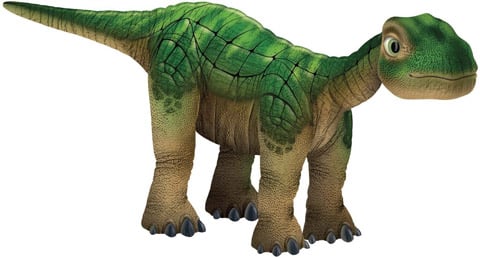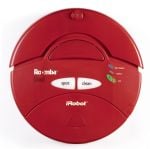Original URL: https://www.theregister.com/2007/05/25/softky_robots_part_one/
Why do robot experts build such lousy robots?
We meet the nerds with the world's cleanest floors
Posted in Science, 25th May 2007 23:19 GMT
In Silicon Valley, any conference calling itself the "Best of the Best" promises more fluff than stuff. But a recent Churchill Club event which promised the cream of the robotics industry confirmed the sceptics' worst fears. Consumer robotics is a business built mostly on play, hope and tinkering - rather than profit or technical accomplishment - to the point that huge, obvious, deal-breaker truths are never even mentioned.
Like the fact that the main appeal of robots, their "autonomy" and "intelligence," are decades away from reality even in the lab.
Or that those vaunted features - if real - would still have negligible economic value, since they can be supplied by any human for next to nothing.
Or that hobbyists aren't likely to succeed where even latter-day Einsteins are flailing.
The conference not only dodged those Big Questions, but tripped up on more basic ones. To start with, what is a "robot"? The most obvious answer - a walking humanoid - was mentioned briefly, to universal disparagement. Upright biped robots are unstable, better for showing off engineering prowess dancing at trade shows (like the eerily naturalistic Honda 'Asimo') than for doing real work, no matter how much the Japanese love them. The second-most-obvious kind of robot - a bolted-down, articulated arm on a factory assembly line - was never mentioned at all, although such robots do a lot of the real work in the real world. And nothing about the various remote-controlled "robot" rovers, driven from a safe distance to explore inhospitable places like Mars or Iraq.
No, at the Churchill Club conference in San Francisco, the only "robots" on offer were an automated vacuum-cleaner, a couple toys, and a GPS-driven car.
A dino friend for Furby
The most gushing cheerleader for robots was one-time performance mime and animator Caleb Chung, inventor of the too-cute Furby toy nine years ago. Furby mostly blinked and cooed - like the deceptively cuddly ye evil creatures from the 1984 movie Gremlins - but that was enough to sell a cool billion dollars' worth of toys, making Furby in dollar terms the most successful consumer "robot" in history.

Chung's latest venture is a doe-eyed dinosaur toy called "Pleo" (for Pleistocene - get it?), which coyly bobs its head and shuffles when you stroke it, and gently chews things you put in its mouth, if they are opaque enough for its sensors to notice. Chung's grand goal is for people to form an emotional bond with his robotic companions, and he is most proud of hard-wiring more "organic", less-jerky motion into Pleo's many microprocessors and limbs. This robot is an affectionate, animatronic companion. I guess.
At the head table, Pleo briefly faced off in a mock battle against his antithesis, a proudly robotic Terminator-like construction from the other toy manufacturer, Lego Mindstorms. Pleo, like a character from the kids' animated film The Land Before Time was soft, green, cuddly, quiet and slow; his Mindstorms opponent was an angular, whirring construction of visible gears and girders, metallic gray, attacking jerkily. The Lego Terminator (and a similarly aggressive robo-scorpion) were deliberately mechanical and sharp-edged, because even as toys they appeal to a different demographic: tinkerers.
The Mindstorms system, as described by Lego exec Søren Lund, is not itself a robot, but rather a "toolkit" with which hobbyists can construct their own robots. Lego customers apparently want to assemble the skeleton by hand and see their gears spin, and probably don't have the sophistication to program the more fluid animal motions of Pleo. Plus, they like building weapons more than caressing plastic pseudo-pets.
The Lego system, at about $200 a pop, has been a huge hit with home tinkerers and science-project schoolkids. It has modular beams, gears, pulleys, sensors, wheels, and all the pieces necessary for a dedicated inventor to create, say, a gadget that follows a line of black tape across the floor, reverses direction if it bumps a wall, or scoops up ping-pong balls. Lund mentioned a more extreme construction, which inspects, holds, and actually manipulates a Rubik's Cube puzzle to solve it, here. Mindstorms now even connects to the Microsoft Robotics Studio, so that Windows can crash your (toy) car as well as your computer.
Will wonders never cease?
This robot sucks
 Neither Lego nor Pleo could compete with the other robot on display, the hockey-puck-shaped Roomba autonomous vacuum cleaner. Roomba can navigate a room while vacuuming up dust, and return to his dock to recharge afterwards. That's pure utility, according to iRobot CEO Colin Angle, a money-saving and time-saving service for which people are happy to pay, and that's what it will take to move the robotics "industry" into a self-sustaining mode.
Neither Lego nor Pleo could compete with the other robot on display, the hockey-puck-shaped Roomba autonomous vacuum cleaner. Roomba can navigate a room while vacuuming up dust, and return to his dock to recharge afterwards. That's pure utility, according to iRobot CEO Colin Angle, a money-saving and time-saving service for which people are happy to pay, and that's what it will take to move the robotics "industry" into a self-sustaining mode.
He's right about the business angle, but at two million units sold, it's not yet even a Furby. On the other hand, it is an actual autonomous robot, and less faddish than the Furby too. Based on this success, after almost two decades of trying, iRobot is branching out into automatic floor-scrubbers, pool-cleaners, and bomb-defusers - that last one not yet available for the consumer market, unfortunately.
Yet apparently, robot-love is still driving much of that "utility" market.
Most Roomba owners give affectionate names to their toys vacuums. To satisfy the robot-lovers, iRobot has a new Roomba model, called Create, which is in fact a non-vacuuming version with a "payload bay" for aspiring roboticists. The toy Pleo will also likewise be opened up for creative customer tinkering and hacking (any bets on the first copulating dinosaurs?), meaning that all three consumer products on show at this seminar are explicitly chasing the tinkerer market by becoming tool-kits. So making and playing with robots evidently beats using and ignoring them.
The geeks with the world's cleanest floors
The "roll your own" approach to robotics obviously attracts customers, but it also conveniently outsources to consumers the single biggest barrier to any kind of autonomous gadget: making sense of and acting in the world. Gathering sensor data is a piece of cake compared to analyzing it; hooking up motors is nothing compared to deciding just how to drive them, and deciding if it worked. So it was fitting that the remaining panelist, Prof. Sebastian Thrun of Stanford, specializes in computer-vision research rather than industrial gadget-building.
His fame comes from building the winning car in the DARPA Grand Challenge desert road-race. He did the opposite of what these gadget-makers are doing; he effectively outsourced the mechanical car to Volkswagen, and focused his team on the statistical-inference software necessary to actually drive it. Next to the robo-boosters on stage, he appears gentle and self-effacing, speaking carefully in his conflicting roles as the most visible proponent of a new industry - he's given a hundred talks in the last year - and as a careful researcher in a field littered with oversold and under-performing "breakthroughs".
The fact is, what allowed Thrun's car (Stanford's "Stanley") to cross a hundred miles of desert dirt unaided was not mechanical wizardry or "intelligence," but the careful application of statistical inference and software design to merging three kinds of sensor data: GPS coordinates, laser range-finders, and video color/texture signals. The secret sauce was in detecting the road fifty metres ahead and avoiding large obstacles, and even that apparently simple task consumed a year of the lives of a dozen computer science graduate students. It's hard to imagine Joe Tinkerer doing such things at home with his Mindstorms kit.
Thrun threw cold water on the idea of immediate robot gratification. His ultimate goal is a self-driving car, a vehicle which would be a safer and more attentive driver than humans, freeing our minds from the roadway, speeding traffic by packing cars closely. This indeed would be a pivotal social and technological revolution - more so than floor cleaners and cuddly toys - but Thrun is the first to admit that it is still a pipe-dream, dozens of years away in technology, and blocked by liability lawyers at every turn. In planning his upcoming car-contest entry, he is consumed by an apparently simple challenge: how a computer vision system might detect moving objects and predict their motion, a task at which frogs are still in the lead.
So for the time being, the so-called "robot industry" looks to be dominated by factory assemblers, remote-controlled rovers, clever toys, DIY kit, and cleaning devices which roam the floors of indulgent early-adopters. But not by truly autonomous agents which can operate in the outside world unsupervised.
For that, we need breakthroughs both in statistical inference software and in the business of robotics itself. And we'll examine this in Part Two, next week. Stay tuned. ®